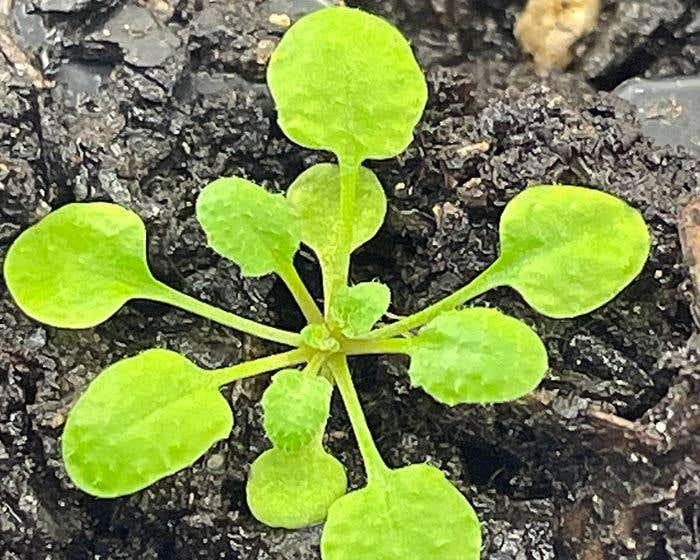Breakthrough enzyme discovery fights crop disease and prevents outbreaks
Rutgers and Brookhaven scientists have cracked the structure of a key plant enzyme, opening the door to safer and stronger crop protection tools.

Rutgers scientists uncover how plant enzyme metacaspase 9 activates to fight disease, opening doors to better crop protection. (CREDIT: Rutgers University)
For the past 30 years, scientists have been on a mission to unlock the secrets of how plants defend themselves. That journey just reached a major milestone. Researchers from Rutgers University and Brookhaven National Laboratory have discovered how a specific plant enzyme—metacaspase 9—works at the molecular level. Published in the journal, Nature Communications, this breakthrough could lead to safer and more effective ways to protect crops from disease.
This enzyme plays a crucial role in a process called programmed cell death. In plants, this isn't a bad thing—it actually helps fight off infections. When a plant cell becomes infected, the enzyme helps kill that cell to stop the disease from spreading. But until now, scientists didn’t fully understand how this enzyme activated or how it could be controlled.
Using advanced imaging and simulations, the team figured out exactly how metacaspase 9 changes shape when exposed to certain conditions, like increased acidity. Now that they know this, they can design tools that use the enzyme’s power to help plants fight off infection.
Cracking the Code of Plant Defense
The enzyme, metacaspase 9, is found only in plants. It works by cutting other proteins and triggering cell death in a controlled way. This protects the plant from harmful invaders. The Rutgers-Brookhaven team studied this enzyme in Arabidopsis thaliana, a small flowering plant often used in research.
By shining powerful X-rays on the enzyme at Brookhaven’s National Synchrotron Light Source II, the scientists captured images of its structure down to the atomic level. They saw how the enzyme changed at different acidity levels, revealing its activation process.
They discovered that metacaspase 9 only becomes active in acidic environments—between pH 4.6 and 5.6. This acidity causes the enzyme to cleave itself at a specific point, removing a block that normally prevents it from working. Once activated, it can target and break down proteins that help spread disease.
Related Stories
The scientists also ran molecular dynamics simulations to observe how the enzyme moves and reacts under different conditions. These simulations showed that certain parts of the enzyme act like brakes or accelerators, depending on how acidic the environment is. At neutral pH, some amino acids suppress its activity. At acidic pH, others promote activation.
Key residues like Glu112, His193, and His208 suppress the enzyme when deprotonated. But under acidic conditions, Glu255 and His307 help it switch on. This delicate balance ensures the enzyme only activates when it’s needed.
A New Weapon Against Crop Diseases
Metacaspase 9 helps plants deal with two major types of pathogens. Biotrophs feed on living plant cells, while necrotrophs kill cells and then eat the remains. The enzyme helps fight biotrophs by triggering cell death early, starving the invader of nutrients. But necrotrophs can hijack the enzyme, using it to kill healthy cells faster.
The goal is to boost the enzyme when fighting biotrophs and block it when necrotrophs are present. This could help control diseases like powdery mildew, rust, and white mold. The team has already created super-active versions of metacaspase 9 that can be used to boost resistance.
"By creating hyperactive versions of metacaspase 9, we may protect plants... by causing cell death at the invasion site earlier," said Professor Eric Lam from Rutgers University.
This could have a huge impact. According to the U.S. Department of Agriculture, fungal pathogens cause 10-20% of crop loss each year, costing the industry $100 to $200 billion. Safer crop treatments based on this enzyme could save both food and money.
Lam’s team believes that understanding the enzyme's structure will also help develop new agrochemicals. These treatments would block the enzyme only when needed and without harming animals or the environment. That would be a big step up from today’s limited and sometimes toxic fungicides.
The Science Behind the Scenes
The Rutgers and Brookhaven team used several high-tech methods to get their answers. First, they created mutant versions of the enzyme to observe how different conditions affect its activity. Then they studied the enzyme’s structure in three conditions: acidic (pH 4.2 and 5.5) and neutral (pH 7.5).
They found that in neutral conditions, the enzyme stays off. Its parts are too far apart to allow cutting activity. But in acidic conditions, everything lines up. A specific site on the enzyme—around the amino acid Arg183—cleaves itself and activates the cutting function.
Advanced simulations backed this up. The scientists ran 50-nanosecond simulations showing how parts of the enzyme move. At pH 7.5, the critical cutting site stays far from the active center. But at acidic pH, it stays close, allowing the enzyme to do its job.
These insights also showed how protonation, the process of adding hydrogen ions, influences activation. For example, the residue Glu112 forms helpful bonds when protonated at low pH, guiding other parts into place.
What’s Next for Crop Innovation
This isn’t just an academic success. Lam and co-researcher Qun Liu at Brookhaven have filed a provisional patent to develop new crop-protecting tools based on their findings. These could include genetic changes that help plants produce more effective forms of metacaspase 9 or chemicals that tweak the enzyme’s activity.
The team plans to test their enzyme variants in real crops and under real farm conditions. They hope this will lead to stronger, more disease-resistant plants without the need for as many chemical sprays.
At a time when the world faces rising food demands and environmental concerns, this discovery could offer a better way to protect the food supply. As Lam said, "This work could usher in much safer and effective treatments for our crops worldwide."
Their research doesn’t just help understand plant biology. It creates a path toward greener, more efficient farming.
Note: The article above provided above by The Brighter Side of News.
Like these kind of feel good stories? Get The Brighter Side of News' newsletter.



